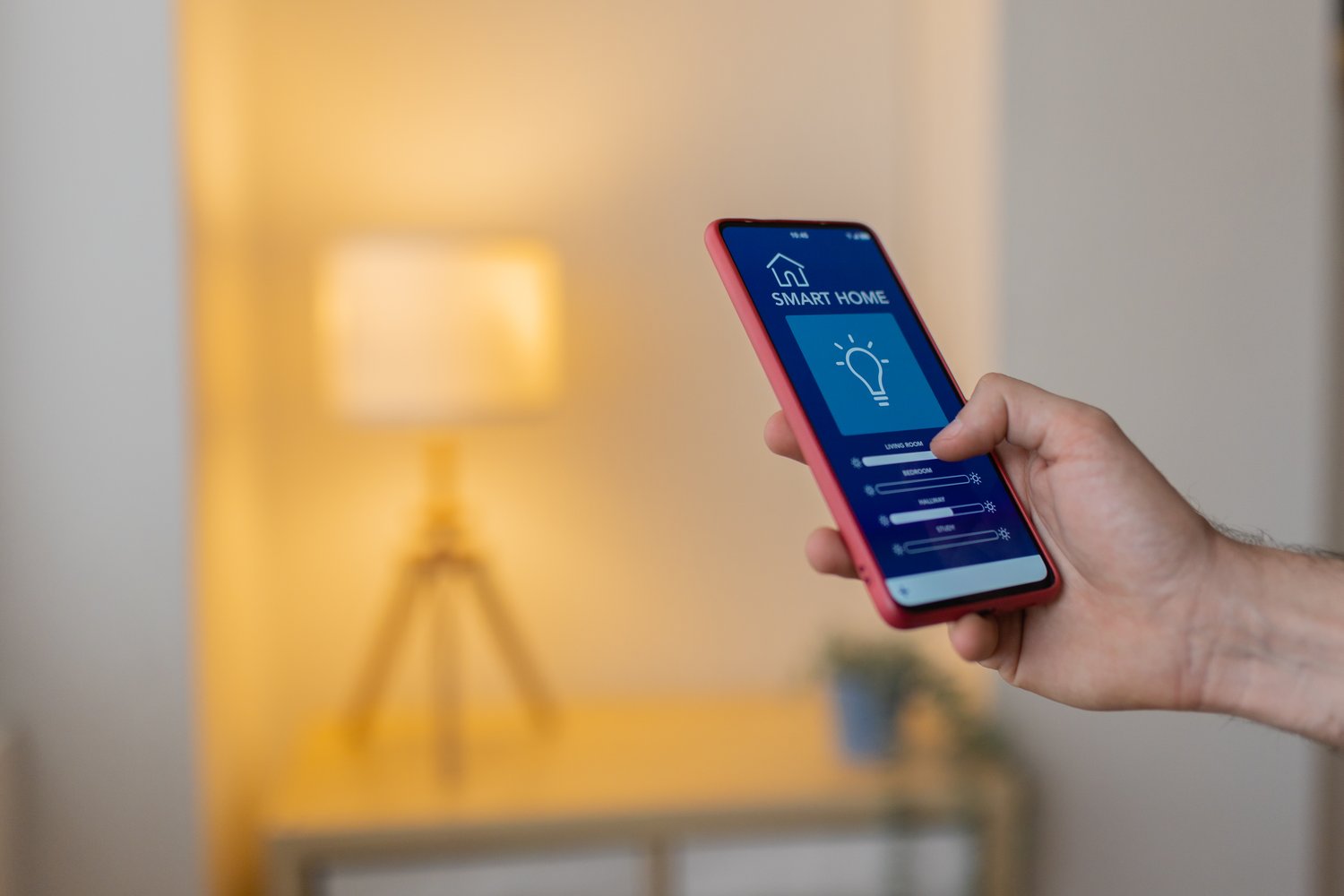Imagine transforming your living space into a beacon of modern convenience and energy efficiency with a DIY smart lighting system. More than just a bright idea, this guide will illuminate your path towards effortless home automation, room by room. With smart lighting quickly becoming a staple in contemporary homes, understanding how to seamlessly integrate these systems is both a savvy and rewarding venture.
- Choosing the Right Components: Discover how to select smart lighting components that suit each room, balancing compatibility and efficiency.
- Budget-Friendly Options: Explore affordable smart lighting solutions that maintain high standards of quality and functionality for beginners.
- Room-by-Room Installation: Follow step-by-step instructions for installing smart lighting in various rooms, tailored to specific requirements and best practices.
- Seamless Integration: Learn how to integrate smart lighting with your existing home systems, enhancing the connectivity and ambiance of your living space.
With this guide, you’ll not only save on electricity bills but also enjoy the convenience and ambiance that smart lighting offers. Dive into the article to gain deeper knowledge and confidently embark on your home automation journey.
Choosing the Right Components for Your DIY Smart Lighting System: Room-by-Room Installation Guide for Beginners
Embarking on a DIY smart lighting project involves selecting components that fit each room’s specific needs and ambiance. The key is to focus on compatibility and efficiency. Start by evaluating the purpose of lighting in each room.
For living rooms, consider smart LED bulbs with adjustable brightness and color temperature. These features allow you to create a cozy atmosphere during the evening or brighten the space for reading. Options with voice control compatibility can enhance ease of use.
In the kitchen, smart lighting should focus on practicality. Look for under-cabinet LED strips that illuminate work surfaces efficiently. Ensure the components can withstand moisture and heat often encountered in a kitchen setting.
Bedrooms benefit from smart lighting that promotes relaxation. Opt for smart bulbs with a warm hue and adjustable settings to tailor the environment to your mood. Consider incorporating motion sensors for added convenience during nighttime.
For home offices, the priority should be on reducing eye strain during work. Select smart lighting fixtures that mimic natural daylight. This enhances concentration and boosts productivity. Components with a high color rendering index (CRI) are ideal.
To ensure compatibility, check that all smart lighting components integrate with your existing smart home systems, such as voice assistants or smart hubs.
Budget-Friendly Smart Lighting Solutions for Beginners
Creating an efficient smart lighting system doesn’t mean breaking the bank. Affordable options abound that offer functionality without skimping on quality. Start with smart LED bulbs, which are both energy-efficient and long-lasting.
Consider purchasing a set of entry-level smart bulbs. These often come in multipacks, making it cheaper per bulb, ensuring you have plenty to cover your home’s needs.
Look for non-branded or less-known manufacturers that offer competitive prices without compromising on essential features like app control and schedule settings. Many of these budget-friendly options are compatible with popular smart home ecosystems.
Additionally, consider retrofitting existing fixtures rather than replacing them entirely. Using smart plugs or compatible dimmers can turn conventional lights into smart lighting solutions economically.
Take advantage of sales events and discounts. Seasonal sales and online marketplaces often feature significant savings, especially on older models that still deliver excellent performance.
Step-by-Step Room-by-Room Installation in Your DIY Smart Lighting System: Room-by-Room Installation Guide for Beginners
Embarking on a DIY smart lighting project can transform your home into a modern, energy-efficient haven. This step-by-step guide will help you navigate the installation process in each room, addressing unique requirements and best practices for seamless integration.
Living Room: Begin with the living room, often the primary gathering space. Consider installing smart LED bulbs into your existing light fixtures for a simple setup. Choose bulbs compatible with voice assistants for ultimate convenience. Ensure strong Wi-Fi connectivity to maintain a smooth system operation.
Bedroom: In the bedroom, focus on enhancing comfort and ambience. Smart dimmer switches provide control over brightness, allowing for customized lighting that can match your mood or activities. For added functionality, look for smart bulbs with color-changing capabilities and set up automated schedules for a gentle wake-up routine.
Kitchen: Efficiency and functionality are key in the kitchen. Opt for smart under-cabinet lights and recessed ceiling fixtures that can be controlled via your smartphone. Integrate motion sensors to save energy by having lights turn on only when needed.
Bathroom: Safety and relaxation should guide your lighting choices in the bathroom. Install smart bulbs in overhead fixtures that are water-resistant and can withstand steam. Consider options with pre-set scenes for morning prep or winding down in the evening.
The correct approach and selection of components tailored to each room will ensure your DIY smart lighting setup is both efficient and effective, enhancing not only the look but also the functionality of your home.
Integrating Smart Lighting with Your Current Home Setup
Connecting your smart lighting system with existing devices enhances your home’s connectivity and overall smart home experience. Follow these instructions for seamless integration.
Firstly, choose a compatible smart home hub that supports the protocols of your lighting system, such as Zigbee or Z-Wave. A hub acts as a central unit, enabling all devices to communicate effectively. This ensures a more stable network and expands the functionality of your setup.
Next, update your smart home app to the latest version for enhanced features and security. Ensure that all devices, including your smart bulbs and switches, are added to the app. This step is crucial for remote access and customization of lighting settings.
Integrate your lighting with voice-controlled devices such as Amazon Alexa or Google Home. This enables voice commands for hands-free operation. Simply follow the manufacturer’s instructions to link these systems.
Finally, customize automations to optimize your daily routine. Set routines like dimming lights at dusk or turning them off automatically when you leave the house. Create specific scenes for activities like movie watching or reading, enhancing both efficiency and comfort.
Integrating smart lighting with your current home setup not only improves your living space’s connectivity but also provides an intuitive and energy-efficient lighting solution.
Frequently Asked Questions About DIY Smart Lighting Systems
What are the essential components of a smart lighting system?
Components: Smart bulbs, a smart hub or bridge, a compatible app for control, and potentially sensors for automation.
Do I need a smart home hub for smart lighting?
Hub Requirement: Some smart lighting systems work without a hub by connecting directly to Wi-Fi, while others require a hub for advanced features.
Can smart lights be used with regular light switches?
Switch Compatibility: Yes, they can, but using smart switches or dimmers can enhance functionality.
How do I ensure compatibility between different smart lighting products?
Compatibility Check: Ensure that all components support the same connectivity standards (e.g., Zigbee, Z-Wave, or Wi-Fi) and check for app compatibility.
Are there budget-friendly options for smart lighting?
Budget Options: Yes, many brands offer affordable smart bulbs and starter kits that provide essential features at a lower cost.
How do I improve the connectivity of my smart lighting system?
Improving Connectivity: Use a robust Wi-Fi setup or consider a mesh network to ensure strong signal coverage throughout your home.
Is professional installation necessary for smart lighting?
DIY Installation: Most systems are designed for easy DIY installation, with detailed guides and app instructions available.





